Forty names, games, teams and minutiae making news in college basketball, where Ohio State Buckeyes interim coach Jake Diebler has suddenly become Mr. Sunday after stunning upsets of the Purdue Boilermakers and Michigan State Spartans:
Final thoughts on court storms
The Minutes weighed in Saturday on the scene at the Wake Forest Demon Deacons that led to the injury to Duke Blue Devils star Kyle Filipowski; that column can be found here. But there are a couple more things to say.
One, people who want to somehow make it the fault of Filipowski or Iowa Hawkeyes women’s basketball star Caitlin Clark that they were involved in postgame, on-court collisions with fans fundamentally don’t get it. The fans don’t have the right to be there; the players do. If you’re in a no-fault car wreck and the other driver is 14 years old, guess who is in trouble? The driver who isn’t supposed to be on the road. Everybody roots for security (or a player) to deck on-field trespassers during football games—not because they delay the game very long, but because there is a price to pay for invading that space. Why is it dramatically different postgame when the players are still on the court or field?
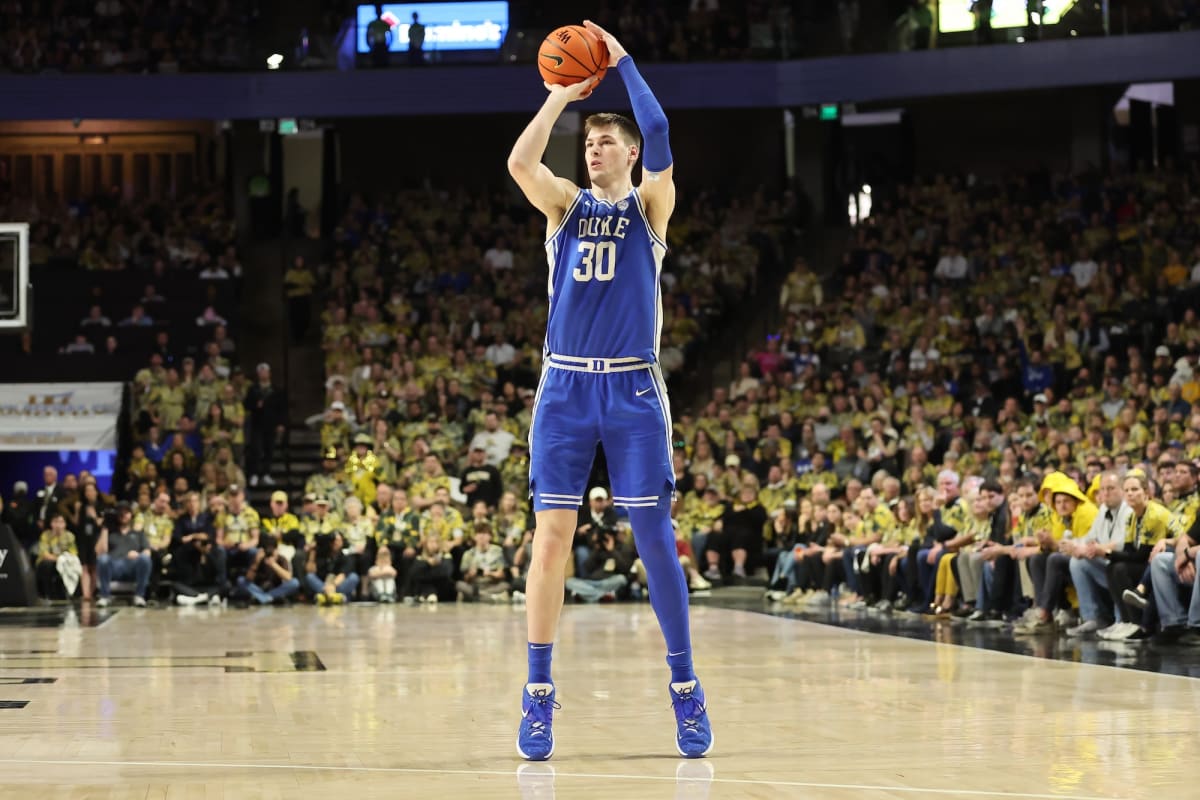
Cory Knowlton/USA TODAY Sports
Two, schools can set the expectation for fans to stay off the court. They can even make it aspirational. Example: Kansas State Wildcats (1). I attended the Wildcats’ thrilling, overtime upset of their arch-rival, the Kansas Jayhawks (2), in Manhattan, Kans., three weeks ago, and when the victory was secured in the closing seconds, the K-State staff gestured for the students to stay off of the court. They did, and then coach Jerome Tang (3) and his players joined them in the stands to do the Wabash Cannonball. Don’t think anyone left Bramlage Coliseum that night feeling disappointed.
I asked Tang afterward about keeping the fans in the stands. His answer: “We’re building an expectation that these are the games we’re going to win, and we’re going to be that kind of a program. I never see them storm the court at Allen Fieldhouse, I never see them storm the court at Duke and Carolina.”
Most intriguing bubble and bubble-adjacent teams
The next two weeks are about two things: chasing conference championships and improving positioning for NCAA tournament at-large bids. The Minutes takes a look at 10 intriguing teams of varying bubble status:
St. John’s Red Storm (4). Current status: Deep bubble. Record: 16–12 overall, 8–9 in the Big East. NCAA NET rating: 49. KenPom rating: 39. Quad 1 and 2 record: 8–11. Quad 3 and 4 losses: one. Last tourney appearance: 2019.
In a vintage week of Rick Pitino theater (5), the Red Storm went from ruination to upsetting the No. 15 Creighton Bluejays. After blowing a 19-point lead against the Seton Hall Pirates in a game of major bubble implications, Pitino declared this season the “most unenjoyable experience of my lifetime,” while despairing his team’s lack of athleticism and toughness. What followed was utterly predictable for veteran Pitinologists: a road victory three days later at the Georgetown Hoyas; Pitino breaking out a white suit—an occasional signature look of his—for the Sunday game in Madison Square Garden against the Bluejays; and a spirited, borderline dominant performance by St. John’s to change the tenor of the season. With Pitino, there is victory or there is bottomless misery. Which makes for a wild ride.
Path to the bracket: The Johnnies probably need to win out in the regular season, which entails visits to the Butler Bulldogs (moderately difficult) and DePaul Blue Demons (easy), and a home game against Georgetown (easy). If St. John’s gets to 19–12 and 11–9 entering the Big East tournament, it might need one more win there to get on the right side of the bubble. (Pending developments elsewhere, of course.)
The intrigue: Pitino could become the first coach to take six different schools to the Big Dance. And the tournament is always more interesting with him in it.
Gonzaga Bulldogs (6). Current status: On the right side for now, probably, but with little margin for major error. Record: 22–6 overall, 12–2 in the West Coast Conference. NCAA NET rating: 21. KenPom rating: 21. Quad 1 and 2 record: 3–6. Quad 3 and 4 losses: none. Last tourney appearance: last year.
Scheduling a February trip to Rupp Arena turned out to be the lifesaver the Zags needed, as they earned a signature victory over the Kentucky Wildcats that was previously lacking from the résumé. They’ve now won six straight heading into a big Bay Area weekend against the San Francisco Dons on Thursday and the league-leading Saint Mary’s Gaels on Saturday. Problems presented themselves when early wins over the UCLA Bruins, Syracuse Orange and USC Trojans lost currency. After the loss of the BYU Cougars to the Big 12, the WCC’s overall strength has dipped a bit as well.
Path to the bracket: Win both games this week and the bid is locked up. Split and Gonzaga is probably still in good shape. Lose both and the Zags will take some pressure with them to the WCC tournament. The nation’s second-longest active NCAA tourney streak (24 straight) could be on the line in Las Vegas.
The intrigue: Can you have this thing without the Zags and Mark Few (7), who has never missed the tourney as a head coach?
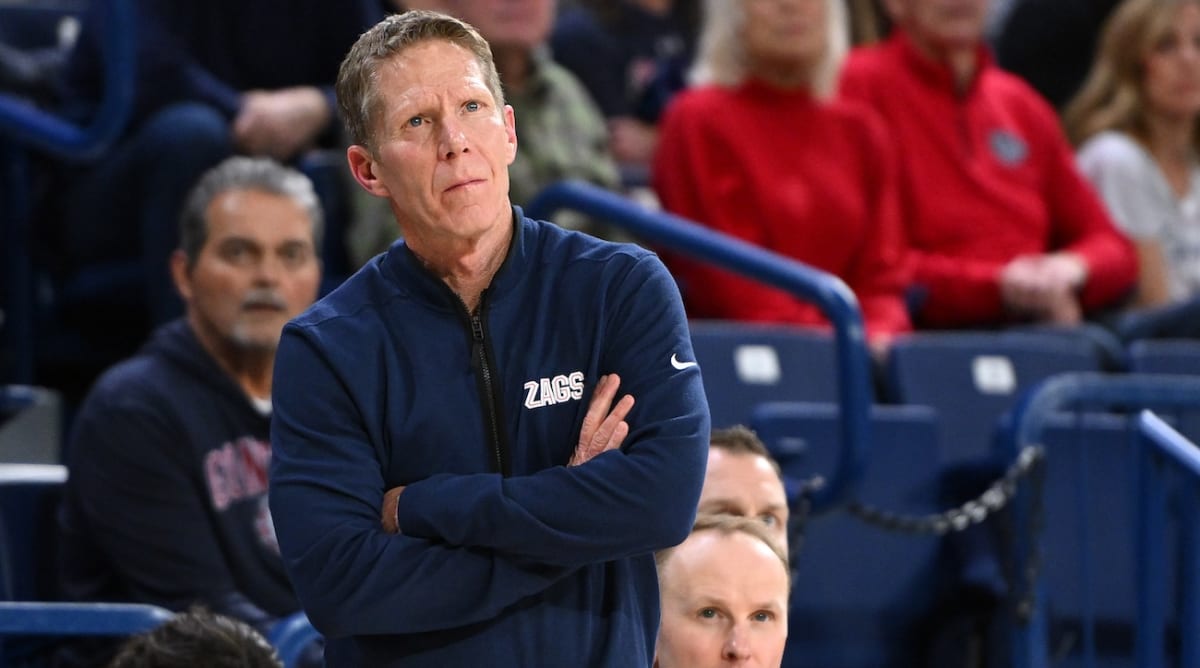
James Snook/USA TODAY Sports
Michigan State Spartans (8). Current status: In, but this is getting weird. Record: 17–11 overall, 9–8 in the Big Ten. NCAA NET rating: 23. KenPom rating: 20. Quad 1 and 2 record: 9–11. Quad 3 and 4 losses: none. Last tourney appearance: last year.
Consecutive home losses to non-tournament teams that are eighth (Iowa) and 13th (Ohio State Buckeyes) in the Big Ten have abruptly curtailed the creeping optimism (9) in East Lansing, Mich. (The Buckeyes hadn’t won a true road game since New Year’s Day 2023, for the love of Brutus Buckeye.) The Spartans have played a comically tough schedule, as usual, and that will punch their ticket to the Big Dance—unless this two-game losing streak is a sign of total collapse.
Path to the bracket: It’s pretty well paved already. But if the Spartans lose the last three of the regular season (at Purdue, vs. the Northwestern Wildcats, at Indiana Hoosiers) to make it a five-game skid, it’s a new discussion. At the very least, they’ve hurt their seeding this past week.
The intrigue: Michigan State has done Gonzaga one better, advancing to 25 consecutive NCAA tournaments. If it misses this one—in a year when it was ranked No. 4 in the preseason—it would be a shocker.
Nebraska Cornhuskers (10). Current status: Living game to game, probably just on the right side of the ragged edge. Record: 20–8 overall, 10–7 in the Big Ten. NCAA NET rating: 43. KenPom rating: 38. Quad 1 and 2 record: 8–8. Quad 3 and 4 losses: none. Last tourney appearance: 2014.
It’s been a very slow build for Fred Hoiberg (11) in Lincoln, Neb., but his fifth team has broken through. This is his first winning record at the school, and the fans have caught the fever to help create a strong home court atmosphere at Pinnacle Bank Arena. The Huskers have won their last four games, most notably getting their first Big Ten road win last week at Indiana.
Path to the bracket: Nebraska can finish the regular season 2–1 with at least one more road win, and that could well be enough and would alleviate pressure for the Big Ten tourney. The Huskers are solidly in the running for a top-four seed in that event and a bye to the quarterfinals.
Virginia Cavaliers (12). Current status: In, but backpedaling rapidly. Record: 20–8 overall, 11–6 in the Atlantic Coast Conference. NCAA NET rating: 48. KenPom rating: 67. Quad 1 and 2 record: 6–7. Quad 3 and 4 losses: one. Last tourney appearance: last year.
Virginia’s offense finds itself in a familiar malaise (13), having scored 49, 41 and 44 points in its last three games while averaging just 0.74 points per possession. The Cavaliers were a combined 4 for 26 from three in their last two games and have lost three of their last four to recede from ACC title contention. Beating the Florida Gators on a neutral court and the Clemson Tigers on the road, in addition to clinching a winning record in a power conference, are important résumé high points.
Path to the bracket: The Hoos could conceivably absorb road losses this week to the Boston College Eagles and Duke and still get in—if they beat the Georgia Tech Yellow Jackets in the regular-season finale. If they drop all three and take a five-game losing streak into the ACC tourney, that could spike their anxiety.
The intrigue: It would be a blow to the ACC and a program that won the natty in 2019 if the Cavs plummeted all the way out.
Texas A&M Aggies (14). Current status: In the thick of the debate, but might be sliding to the wrong side. Record: 15–12 overall, 6–8 in the Southeastern Conference. NCAA NET rating: 58. KenPom rating: 57. Quad 1 and 2 record: 8–7. Quad 3 and 4 losses: five. Last tourney appearance: last year.
The Aggies’ proclivity for bad losses (15) has put the season on the brink. They were swept by the Arkansas Razorbacks, gave the Vanderbilt Commodores one of their two SEC wins and lost at home to the LSU Tigers, Ole Miss Rebels and Memphis Tigers. All that has undercut wins over the Iowa State Cyclones, Kentucky, Tennessee Volunteers and Florida. A&M currently is on a four-game losing streak that includes blowouts against the Volunteers and Alabama Crimson Tide. The Aggies are absolutely awful shooting the ball, with all of their primary three-point threats shooting markedly worse this season than last.
Path to the bracket: A&M has to stop the bleeding immediately, which would mean beating the South Carolina Gamecocks in College Station, Texas, on Wednesday. That and the three that follow (at the Georgia Bulldogs, home against the Mississippi State Bulldogs, at Ole Miss) are all potential résumé boosters. Anything less than a 3–1 finish to the regular season could necessitate multiple wins in the SEC tourney.
The intrigue: Missing the tournament after starting the season ranked No. 15 would be a major disappointment.
South Florida Bulls (16). Current status: Deep bubble, but worth a deep discussion. Record: 21–5, 14–1 in the American Athletic Conference. NCAA NET rating: 91. KenPom rating: 93. Quad 1 and 2 record: 4–3 (all Quad 2). Quad 3 and 4 losses: two. Last tourney appearance: 2012.
So here’s the deal with the Bulls, who on Sunday clinched at least a tie for the league title: The regular-season champion of the American has never been left out of the NCAA tournament … but it’s also been nine years since the American ranked as low as its current ninth in KenPom overall conference strength. The departures of the Houston Cougars, Cincinnati Bearcats and Central Florida Knights have created opportunity but diminished schedule strength. That said: USF’s rampage through the league has been one of the freshest stories of the season, and first-year coach Amir Abdur-Rahim (17) should be on all national Coach of the Year lists after inheriting a program coming off 10 losing seasons in the last 11.
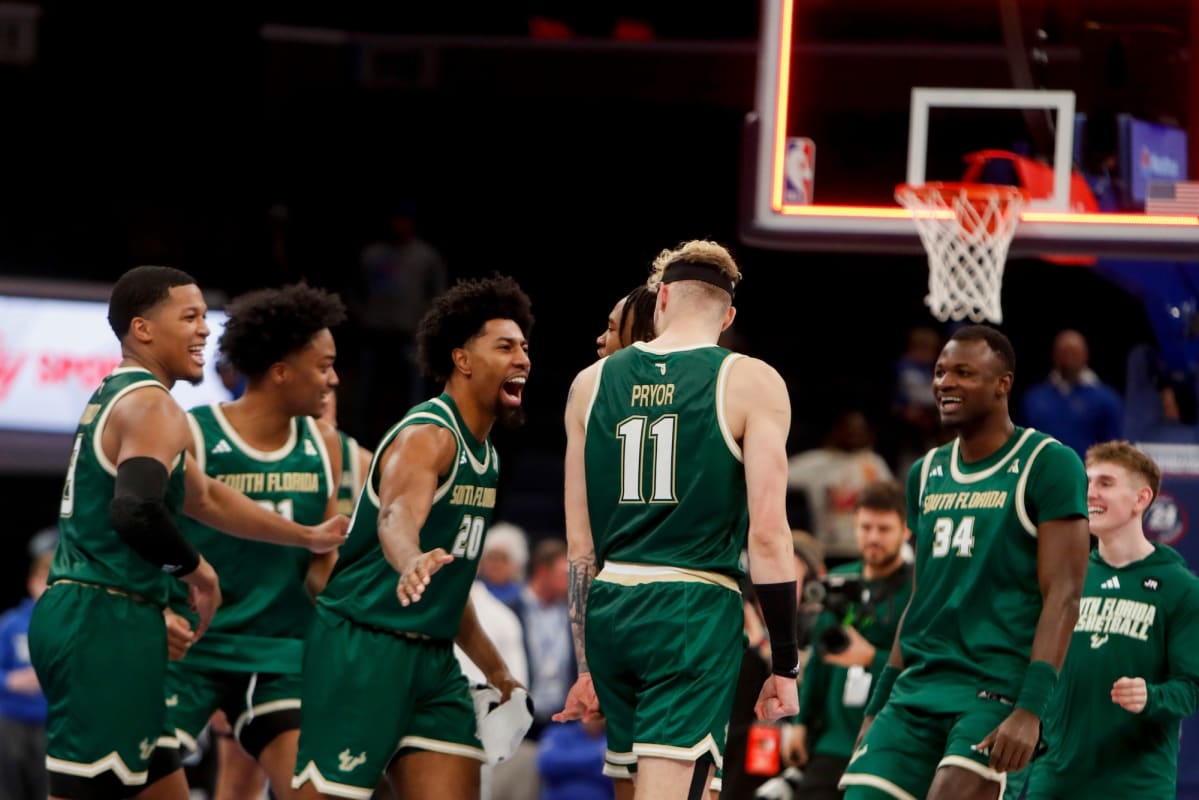
Chris Day/USA TODAY Sports
Path to the bracket: USF put itself behind the eight ball right away, starting 2–4 with losses to the Central Michigan Chippewas, Maine Black Bears, Hofstra Pride and Massachusetts Minutemen—not a huge shock for a struggling program trying to reinvent itself with a new coach. But now those losses weigh down the surging Bulls’ metrics. If they extend their 13-game winning streak through the rest of the regular season and advance to at least the semifinals of the league tourney, USF could be one of the more interesting topics in the committee room.
The intrigue: Can dramatic in-season improvement outweigh a November flop?
Seton Hall Pirates (18). Current status: Trending toward the right side of the bubble, but still on a slippery slope. Record: 18–9 overall, 11–5 in the Big East. NCAA NET rating: 62. KenPom rating: 58. Quad 1 and 2 record: 8–7. Quad 3 and 4 losses: two. Last tourney appearance: 2022.
Seton Hall has had a great Big East run, with home victories over the UConn Huskies and Marquette Golden Eagles and some quality road wins as well. But the Pirates got nothing done in nonconference play, beating bad teams and losing to good ones—and also losing to a bad USC. It’s worth pointing out that Seton Hall went 0–2 without Kadary Richmond, who leads the team in scoring, assists and steals.
Path to the bracket: Win one game this week (at Creighton, at UConn) and win two next week (home against the Villanova Wildcats and DePaul) and the Pirates are in, no questions asked. Lose two this week and win two next week, and they might still be O.K. Anything worse than 2–2 adds tension in the Garden come tourney time.
The intrigue: Last time we saw Shaheen Holloway (19) coach in the Big Dance, he was taking the No. 15 seed St. Peter’s Peacocks to the regional final with wins over Kentucky and Purdue. Let’s see what damage he can do with a high-major roster.
Wake Forest Demon Deacons (20). Current status: Should be feeling good after the win over Duke, but still in day-to-day bubble land. Record: 18–9 overall, 10–6 in the ACC. NCAA NET rating: 25. KenPom rating: 19. Quad 1 and 2 record: 6–9. Quad 3 and 4 losses: none. Last tourney appearance: 2017.
The postgame debacle swallowed all the heat and light from Duke-Wake, but that was a must-win for the Demon Deacons. They had been 0–4 in Quad 1 games until then, with a lot of close losses. Next thing on the to-do list is improving their 3–9 road/neutral record.
Path to the bracket: If Hunter Sallis stays red hot (he was 8 for 9 from three last week), Wake should have chances for two road wins this week at the Notre Dame Fighting Irish and Virginia Tech Hokies. Then the Deacons close the regular season at home against Georgia Tech and Clemson. Win three of four and life is good. Win two and life should be O.K. Win fewer than that and it gets squishy.
The intrigue: The computers love the Deacons. The bracketologists are non-committal. Where will the selection committee land?
New Mexico Lobos (21). Current status: Startled, one would think, after an incomprehensible home loss to the 9–17 Air Force Falcons. Record: 21–7 overall, 9–6 in the Mountain West. NCAA NET rating: 26. KenPom rating: 32. Quad 1 and 2 record: 5–5. Quad 3 and 4 losses: two. Last tourney appearance: 2014.
The Lobos were cruising along just fine, bid all but within reach at 18–3, but now have lost four of their last seven. Two were in The Pit, and both were to non-tournament teams in the UNLV Runnin’ Rebels and the Falcons. They also worked in a key road win at the Nevada Wolf Pack during that stretch, so it isn’t panic time. New Mexico should still be O.K. as of this juncture.
Path to the bracket: Two tough road games, at the Boise State Broncos and Utah State Aggies, bookend a home finale against the Fresno State Bulldogs. The Lobos need to not have another bad home loss, and winning one of the two road games would be a welcome safeguard.
The intrigue: The only thing more intriguing than one Pitino on the bubble is two Pitinos on the bubble (22).
Other looming committee questions
This is peak bubble season, but there is much more for the NCAA tournament selection committee to be watching and weighing. The Minutes poses some pressing questions:
Have the Houston Cougars (23) earned more consideration for the overall No. 1 seed?
When the committee revealed its early top 16 seeds on Feb. 17, the battle for the No. 1 overall seed was between the Purdue Boilermakers (24) and UConn Huskies (25), with the Boilermakers getting the nod at the time over the Huskies. The Cougars were the third No. 1 seed. It made sense at the time.
Since then, though, both lost in startling fashion—Purdue to an Ohio State team that had just fired its coach, and UConn by a whopping 19 points to Creighton. Meanwhile, Houston has rolled to five straight wins in the deepest league in the land, the Big 12.
The Cougars are No. 1 in the NCAA NET and KenPom. Their most recent road win, at Baylor, is better than any true road victory by the Boilers or Huskies. Houston’s nonconference résumé isn’t as impressive as the other two, but its work in the Big 12 should expand the discussion to all three teams for the overall No. 1 seed.
With the home stumble last week by the Arizona Wildcats (26), can the North Carolina Tar Heels (27) crash the top-seed line?
The Wildcats (21–6), who were the committee’s fourth No. 1, opened themselves up to some doubting with their home loss to the Washington State Cougars last week. (No disrespect to the Cougars, who should be America’s Team and a legit squad.) The Tar Heels (21–6) have a couple of questionable losses (Georgia Tech, Syracuse) but a lot of quality wins in a better conference than the Pac-12. And Arizona has two highly suspect losses of its own, to the Stanford Cardinal and Oregon State Beavers.
If not North Carolina, how about the Tennessee Volunteers (28)? They do have a head-to-head loss to the Tar Heels in November, and their 4–5 Quad 1 record might be a disqualifier when compared to Arizona’s 7–3 and North Carolina’s 7–4. But keep this in mind: Tennessee closes with a gauntlet that could dramatically elevate its résumé, if it can stick wins. The Vols have a massive week ahead (the Auburn Tigers on Wednesday, at Alabama on Saturday) and then close by visiting South Carolina and hosting Kentucky. Win three or four of those and the debate is on.
Does the Sun Belt (29) have any shot at multiple bids?
Probably not, but hopefully the committee will give the James Madison Dukes and Appalachian State Mountaineers legitimate at-large appraisal. One will likely win the league’s automatic bid, but both are worth consideration. The Dukes (26–3) started the season with a stunning upset of Michigan State and just kept winning. Their only major problem has been App State (24–5), which swept James Madison in the regular season. The Mountaineers hung their own big-time win by beating Auburn in early December.
James Madison is No. 50 in the NET and App State is No. 75. Maybe if both can win twice this week and then advance to the Sun Belt final against each other, it would give the league a shot at its first multi-bid season since 2013.
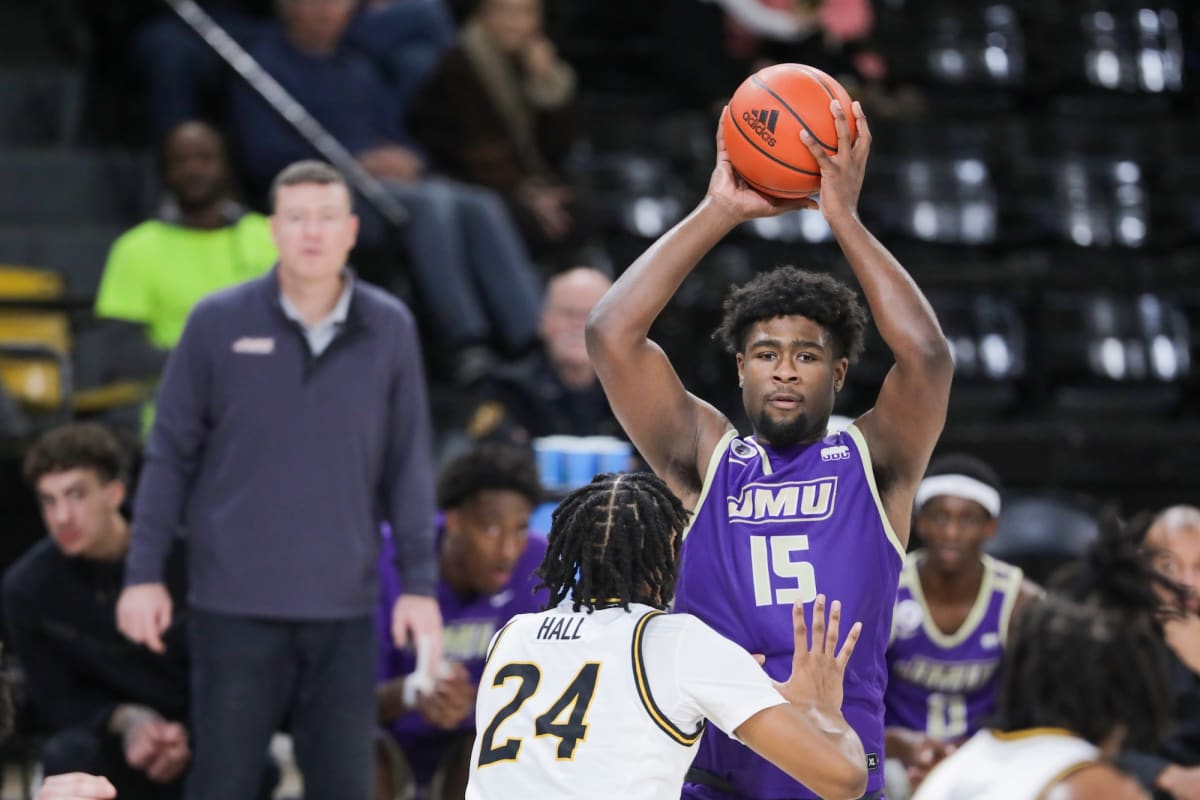
Chuck Cook/USA TODAY Sports
How about the Missouri Valley (30)?
The Valley similarly has two standout teams in the Indiana State Sycamores and Drake Bulldogs (with a potential third spoiler in the Bradley Braves). The Sycamores (24–5, No. 34 in the NET) have become an off-radar cult favorite with their entertaining style of play, and it should be noted that starting forward Jayson Kent missed most of the two upset losses with a concussion. The Bulldogs (23–6, No. 45 in the NET) are on their way to a fourth straight 25-win season. The two teams split meetings this season and seem destined for a third during Arch Madness in St. Louis.
It might simply be too much to ask for the committee to award at-large bids to multiple mid-major conferences when there are so many ninth-place high-majors loitering out there with double-digit losses. If that’s the case, this could be a differentiator: The MVC is a top-10 league per KenPom, while the Sun Belt is No. 17.
The Forde Minutes ‘Let Him Cook’ team
Five guys who, when they get rolling, are a blast to watch and a nightmare to guard:
Rob Dillingham (31), Kentucky. The freshman guard is fifth on the team in minutes (23.2) but second in scoring (15 per game). Dilly is a deadly three-point shooter (45.2%) but equally confident driving to the basket or in the midrange area. He is delightfully disdainful of defenders in one-on-one situations, as he showed in scoring Kentucky’s last 11 points at LSU last week. The Wildcats lost the game, but that wasn’t on Dillingham, who kept making difficult shots to give them a chance.
When he feels it, look out. (Sometimes he feels it when it isn’t even there, which presents a growth opportunity. As do defense and limiting his turnovers.)
Boo Buie (32), Northwestern. The Wildcats aren’t anywhere close to 19–8 without Buie, who leads the team in minutes, shots, threes, free throws and assists. The fifth-year senior has tirelessly put Northwestern on his back for stretches of games, playing more than 40 minutes four times so far this season. Two particularly epic performances in particularly big wins: 29 points, seven assists and three steals in a win over the Illinois Fighting Illini and 31 points and nine assists in a win over Purdue.
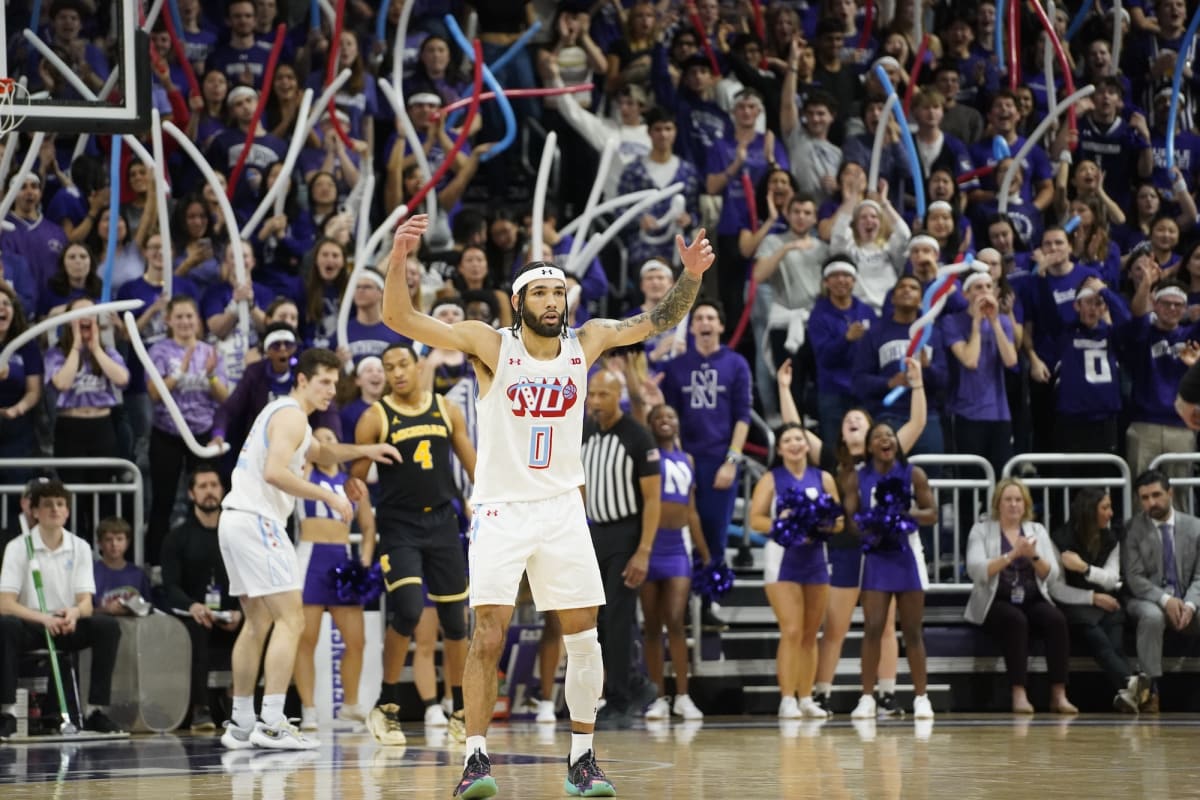
David Banks/USA TODAY Sports
Dalton Knecht (33), Tennessee. The projected first-round NBA draft pick has had some spectacular scoring streaks. He tallied Tennessee’s final 13 points against South Carolina; scored 17 out of the Volunteers’ 21 points in a 5½-minute stretch against Vanderbilt; scored 15 points in 10½ minutes against Alabama; racked up 20 in a 6½-minute stretch against Florida, including nine of Tennessee’s 11 as the Vols went from down four to up four in the final 4:11; and scored 19 points in fewer than 10 minutes against Mississippi State.
Jaedon LeDee (34), San Diego State Aztecs. Hard to believe this guy was a backup last season, when the Aztecs stormed to the national championship game. The fifth-year senior post player has expanded his range this season, hitting the first three-pointers of his career (12 in 31 attempts). He’s scored 20 or more points in SDSU’s last five games, making 37 of 56 field goals and 39 of 51 free throws.
Tyler Kolek (35), Marquette. When Kolek cooks, it’s usually more of a passing game than a scoring outbreak. He’s got eight double-figure assist games this season and leads the nation in dimes at 7.7 per game. (That includes a ridiculous 18 assists in 26 minutes of playing time in a blowout of DePaul.) Nobody in college basketball sees the floor the way Kolek does for the 21–6 Golden Eagles.
Literary corner
The Minutes is eagerly awaiting the forthcoming memoir from former Lexington Herald Leader writer Jerry Tipton (36), who did the impossible: He covered Kentucky basketball as the daily beat writer for 41 seasons and lived to tell about it. Deja Blue is due out in March.
Tipton was part of a vanishing breed of sports writers who did not cover his beat like a fanboy or a program shill. He did not write to please the subjects he covered. He did not skew coverage to protect access. He wasn’t trying to win a popularity contest, just keep the readership informed. (The vast majority of his career came before the widespread onset of social media, which undoubtedly helped.)
He was a contrarian to a degree, but mostly a fair and objective chronicler of events that unfolded in front of him. The vast majority of those events were positive for Big Blue Nation. Some were negative. Tipton’s coverage reflected what went right and what went wrong without fear or favor.
Coaches sometimes hated him. Fans often ripped him. Jerry was unfazed. He kept doing his job, embracing the fun and challenges and occasional tedium of beat work. The book should be widely read in Kentucky and worthwhile for fans of college basketball in general.
Minutes crush of the week
Marques Warrick (37), Northern Kentucky Norse. He’s not just the all-time leading scorer at Northern Kentucky, he also took the occasion of breaking the career points record to do some giving back.
Last Thursday, the senior guard presented a check for $2,067 to Northern Kentucky’s general scholarship fund, a dollar for every point he scored to set the school record. He also made a donation to the Queen City Book Bank to support its mission of increasing literacy in Cincinnati and the Northern Kentucky area. Previously, Warrick has conducted free basketball clinics for kids in his hometown of Lexington, Ky., and made donations of food and money to NKU’s on-campus food pantry.
𝗟𝟯𝗚𝗔𝗖𝗬 𝗦𝗘𝗖𝗨𝗥𝗘𝗗 👏@mtwarrick3 wanted to give back to the community that has given him so much 🫶
— NKU Men's Basketball 🏀 (@NKUNorseMBB) February 23, 2024
He made donations to both the @nkuedu general scholarship fund + to the Queen City Book Bank before tonight's clash with Cleveland State@NKUNorse | #NorseUp pic.twitter.com/33CM6m04V2
After presenting the check to the school last Thursday night, Warrick posted 27 points, seven rebounds and five assists in a win over Cleveland State, helping assure the Norse (16–13, 11–7 in the Horizon League) a winning record in the regular season.
Coach who earned his comp car this week
Chris Jans (38), Mississippi State. The Bulldogs have won five straight to move off the bubble and into a safer portion of the bracket. Jans’s teams always guard like their scholarship checks depend on it, but they’ve shown increased offensive proficiency of late. State has scored more than 70 points in all five of the recent wins, making 16 of 35 threes last week while beating Mississippi and LSU.
Jans has never won fewer than 20 games in six previous seasons as a head coach playing a full schedule (The New Mexico State Aggies only played 20 games total in 2020–21). He’s put 19 on the board thus far this season, with Kentucky visiting Starkville, Miss., on Tuesday. Win that one and the Bulldogs won’t be repeating last year’s First Four trip to Dayton; they’ll definitely be in the main bracket.
Coach who should take the bus to work
Mike Woodson (39), Indiana. It’s gotten to the point that the Hoosiers (14–13, 6–10 in the Big Ten) no longer beat the traditional doormats of the league. They’ve lost in succession to Northwestern, Nebraska and the Penn State Nittany Lions, schools that have a combined 83–180 record against Indiana. The losing streaks to the Wildcats and Nittany Lions are now four games each, and it’s two against the Cornhuskers.
“I’m not going anywhere anytime soon, guys,” Woodson said last week. “I’m just not.”
As the season spirals, you wonder if it will continue to be Woodson’s choice whether he goes or stays.







